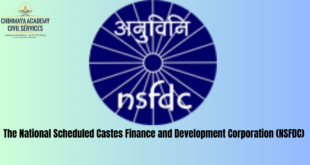- The budgetary allocation for education as a percentage of total expenditure has dropped over the past seven years, from 10.4% to 9.5%, the Economic Survey, 2022-23 says.
- While the expenditure on social services increased from ₹9,15,500 crore to ₹21,32,059 crore, the share of education within this umbrella category shrank from 42.8% to 35.5% between the financial years 2015-16 and 2022-23, according to budgetary documents.
- Part of this could be attributed to the faster growth in spending on health and other measures due to the COVID-19 pandemic.
- The share of education in total expenditure declined from 10.7% in 2019-20 to 9.1% in the first COVID year and remained stagnant in the following year, before being raised to 9.5% in the budgetary estimates for 2022-23.
- As a share of the GDP, the budgetary allocation for education saw a minimal gain of 0.1 percentage points, from 2.8% to 2.9% during the seven-year period.
Dropouts increase
- Though school dropout rates have improved since 2013-14, there has been some reversal of gains since COVID-19, especially in the younger classes.
- In 2019-20, the total dropout rate in primary school was 1.5%, which fell to 0.8% in 2020-21, but rose back to 1.5% in 2021-22.
- However, this is significantly better than the 4.7% dropout rate in 2013-14. In upper primary classes, the dropout rate fell from 2.6% in 2019-2020 to 2.3% the following year, but rose to 3% in 2021-2022, only marginally lower than the 3.1% level seen in 2013-2014.
- In the secondary classes, however, the situation has steadily improved, with the dropout rate falling from 16.1% in 2019-20 to 14% the following year and 12.6% last year.
- Between 2013-14 and 2021-22, the total number of schools declined from 15.2 lakh to 14.9 lakh, with primary and upper primary schools seeing a reduction of one lakh schools to 11.9 lakh, though the number of secondary and senior secondary schools rose by 60,000 to a total of 2.3 lakh.
Higher education
- As far as higher education is concerned, the number of medical colleges in the country increased from 387 in 2014 to 648 in 2022, and the number of MBBS seats have increased from 51,348 to 96,077.
- The number of Indian Institutes of Technology rose from 16 to 23 between 2014 and 2022 and Indian Institutes of Management (IIMs) from 13 to 20.
- The strength of Indian Institutes of Information Technology was 25 in 2022 against nine in 2014. In 2014, there were 723 Universities in the country, and the number has increased to 1,113.
- The total enrolment in higher education has increased to nearly 4.1 crore in financial year 2020-21 from 3.9 crore in 2019-20. Since 2014-15, there has been an increase of around 72 lakh or 21% in enrolment, while distance education has also grown at a similar rate of 20%. In 2021-22, distance education saw a 7% growth over the previous year, with 45.7 lakh enrolling.
SOURCE: THE HINDU, THE ECONOMIC TIMES, PIB
 Chinmaya IAS Academy – Current Affairs Chinmaya IAS Academy – Current Affairs
Chinmaya IAS Academy – Current Affairs Chinmaya IAS Academy – Current Affairs



